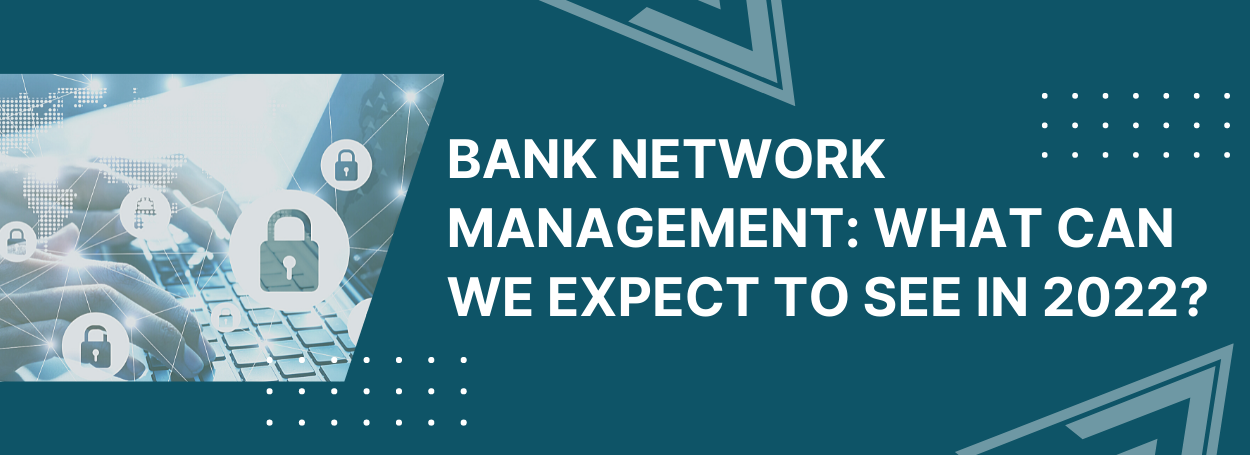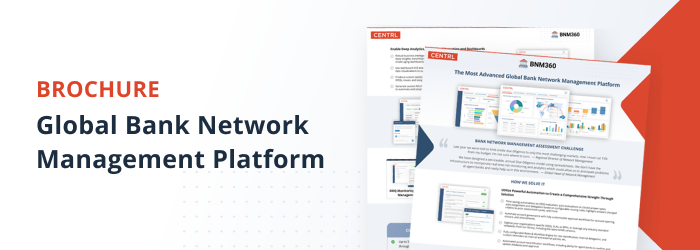Bank Network Management: What Can We Expect to See in 2022?

As best practices in Bank Network Management (BNM) continue to evolve, financial institutions need to understand how their network will change in the coming years, and what standardizations will be expected across the network.
In the financial sector, aligning with changing best practices is critical for success. Our firsthand knowledge of bank network managers, agent banks, and financial market infrastructures has empowered us to see what has been working, and what changes need to be made.
With that in mind, we’ve documented the challenges experienced by those tasked with bank network management in recent years and the trends that bank managers can expect to see in 2022.
The Current Challenges of Bank Network Management
Bank network management is constantly changing, with many parties struggling to adapt to new regulations and requirements. Below, we document some of the core challenges we’ve seen as Agent Banks and network managers struggle to adapt.
Centralization of Risk Management
With many banks now adopting Enterprise Risk Management (ERM), network managers are tasked with consolidating all information into one central location to monitor data across multiple channels from different service providers in real-time.
A bank network’s risk management system must not only help to manage risk across the network, but also serve as an essential tool in managing operational and counterparty risks.
Scaling Operations
The bank workforce has diminished in recent years, yet expectations on service levels increase, which means significant pressure without adding staff.
This puts even more emphasis on technologies aimed at automation that can streamline operations and limit the need for additional staff.
Agent Banks are also expected to deliver a seamless network management experience, while prioritizing security as new threats continue to emerge in the industry overall.
Adapting from Manual to Digital Processes
As financial institutions adopt new technologies to better manage and scale their BNM workflows, they need to understand how software should function and adapt to achieve full integration across all systems.
To do this, bank networks must find ways of consolidating data across multiple service providers into one central location where risk management teams can monitor and respond to annual DDQs in real-time.
This can only be done with a centralized, end-to-end bank network management platform like BNM360.
Trends to Watch in 2022 for Bank Network Management
In light of these challenges and the evolution in bank network management that we’ve seen, we’ve prepared a list of trends we expect Agent Banks and network managers to face in 2022.
An Expanded Focus on Cloud Technology and Risk Management
With bank networks evolving to centralize risk management, it’s increasingly crucial for bank managers to access Cloud-based technology that can quickly scale with their business.
This helps to reduce cost required to maintain onsite servers and increases business continuity by adding redundancy and backup of critical data.
While this is already happening in many areas, the industry will need more investment into technology that can streamline its cybersecurity, risk management, and due diligence measures as well as simplify its administrative procedures.
Increased Focus on Business Analytics
As financial institutions continue to partner with Agent Banks to provide convenience bank services across multiple channels, network managers are relying heavily on technologies aimed at connecting the network in a centralized way.
With this kind of technology, Agent Banks can improve decision-making capabilities through reporting and analytics while simultaneously supervising network banks to ensure that their standards are upheld throughout the network.
The Use of AI and Automation to Streamline Management
We also expect to see greater use of automation capabilities that can simplify the complex gathering, follow-up, and evaluation procedures involved in DDQ questionnaires.
Furthermore, automation will also streamline many of the manual processes involved in BNM, such as scoring DDQs, following up on risk issues and late DDQs, and assigning sections or questions to different teams or people - without the added risk of having to copy and paste content to and from emails.
Introducing BNM360
CENTRL’s Bank Network Management platform (BNM360) is the most comprehensive, integrated, and advanced platform purpose-built for network managers to automate the process from account opening and closure requests to RFP management, ongoing DDQ monitoring, and account recertification.
BNM360 includes modules for complete automation of the DDQ and RFP process, managing the centralized agent bank and account database, with automated workflows for account opening and the account recertification process.
In addition to automated workflows, BNM360 provides centralized document repositories, issue management, powerful analytics, and easy-to-use portals for agent banks. This is all based on the latest technology stacks.
Our platform is designed as a true 2-sided network that brings efficiency, reduces costs, and enhances risk oversight for Network Managers while limiting the burden of Agent Banks.
Are you ready to see BNM360 in action, or do you have questions about our platform? Book a free demo today to talk through your concerns with a BNM expert.


